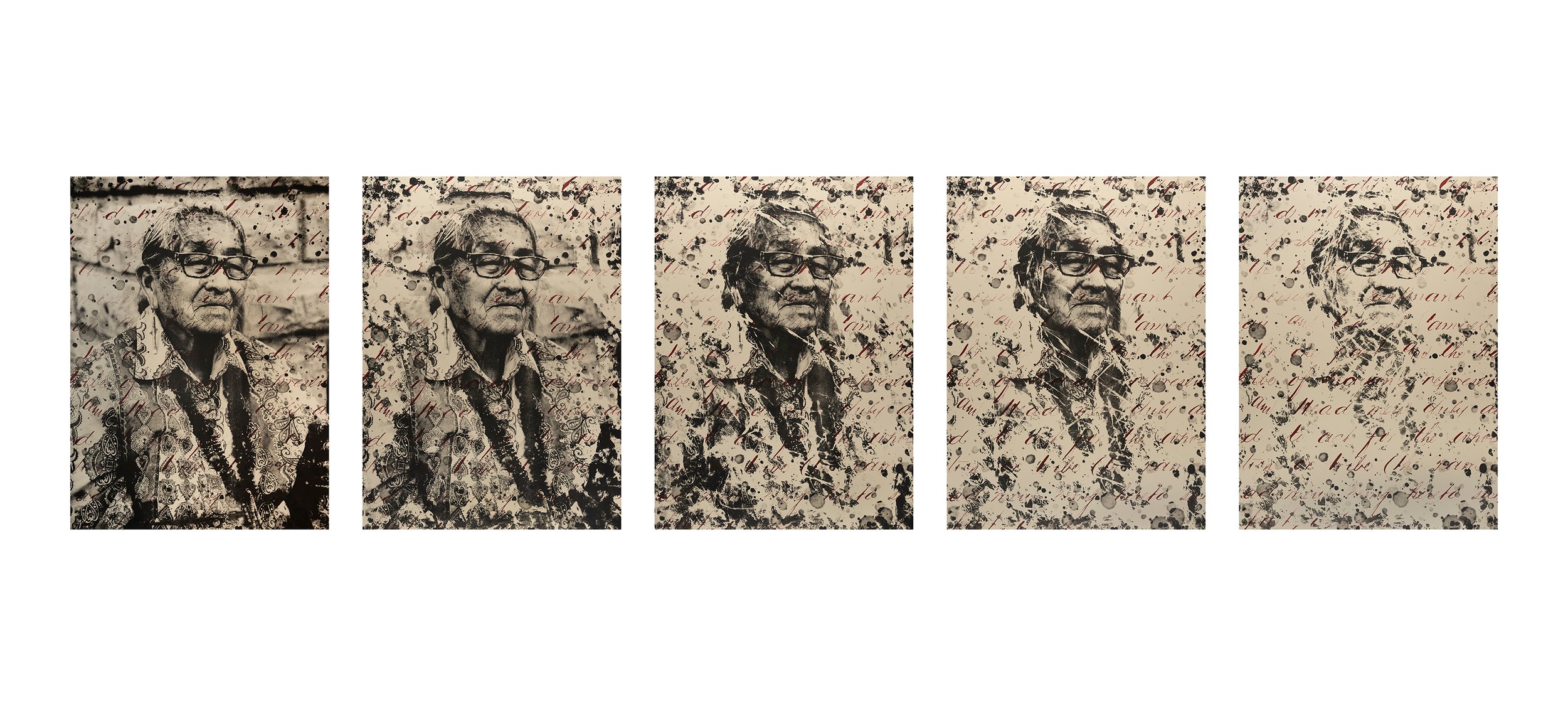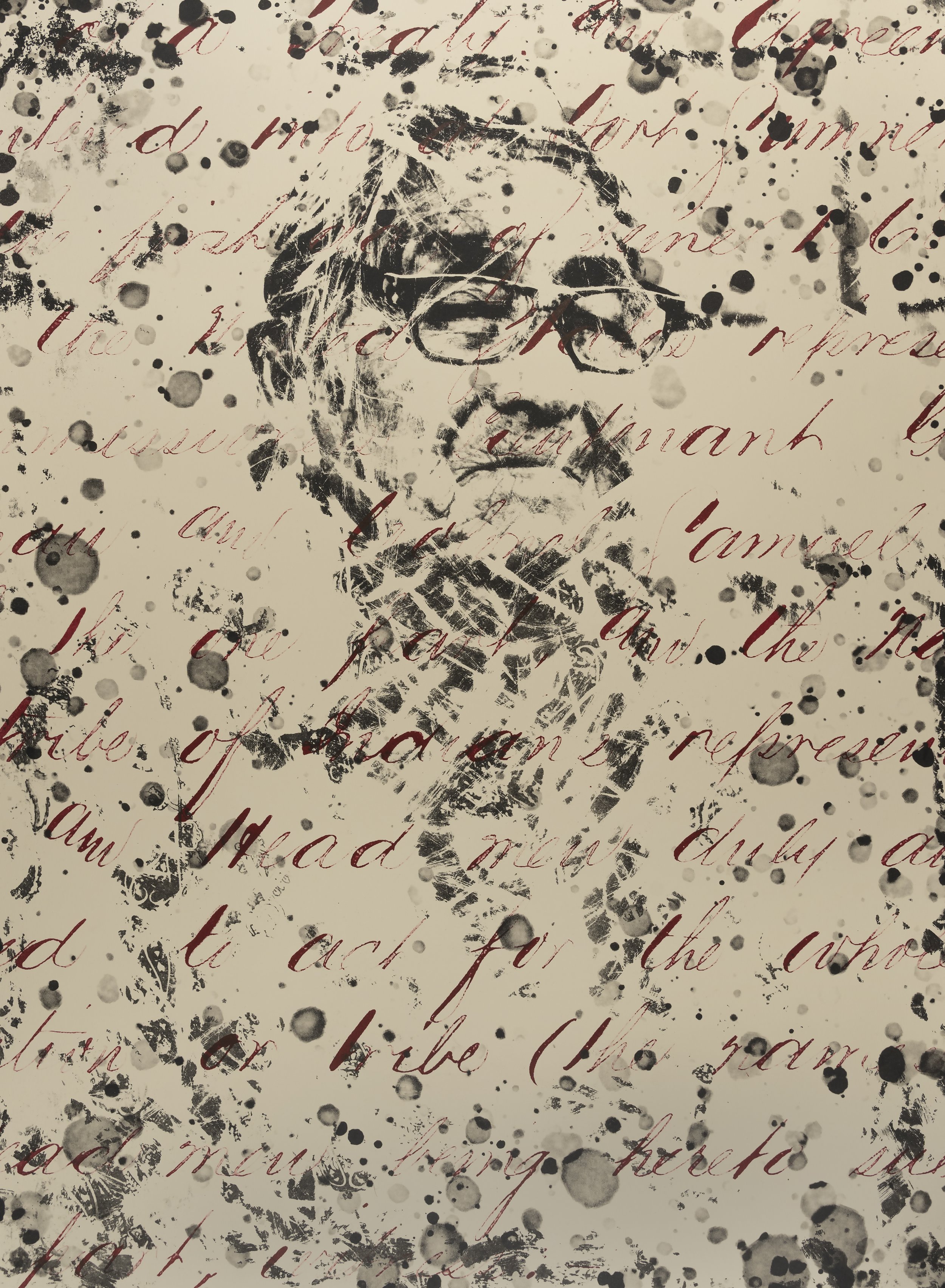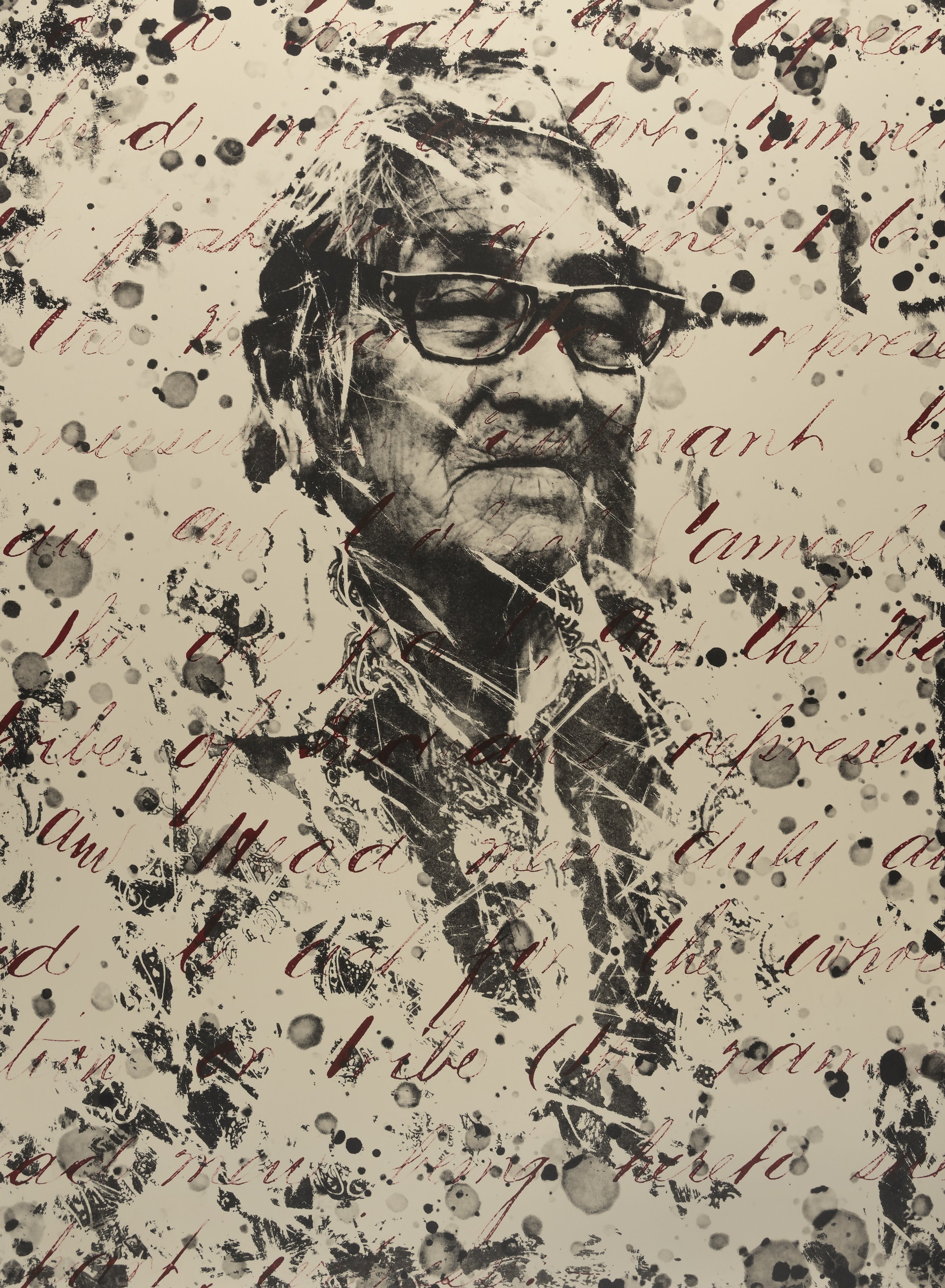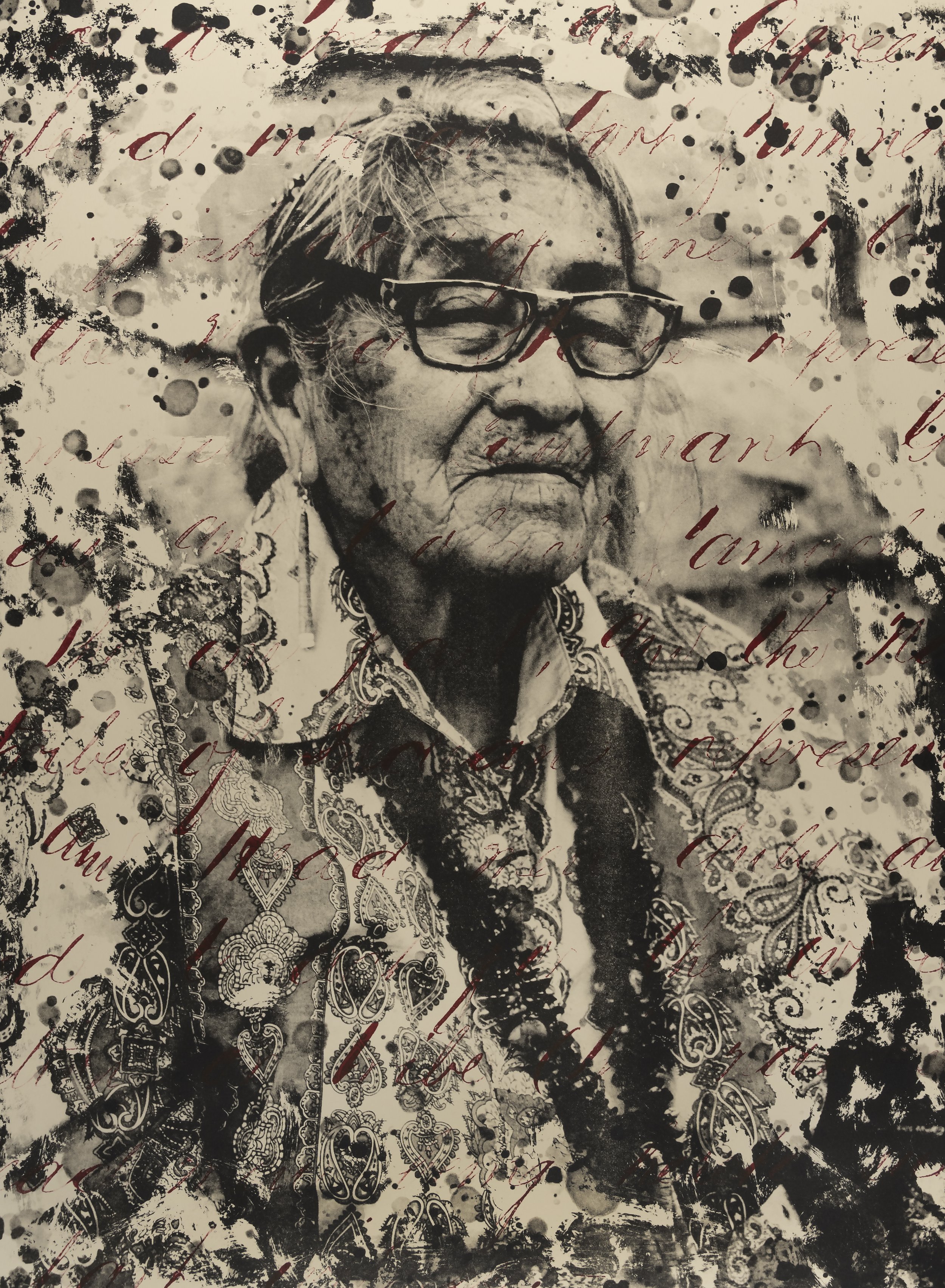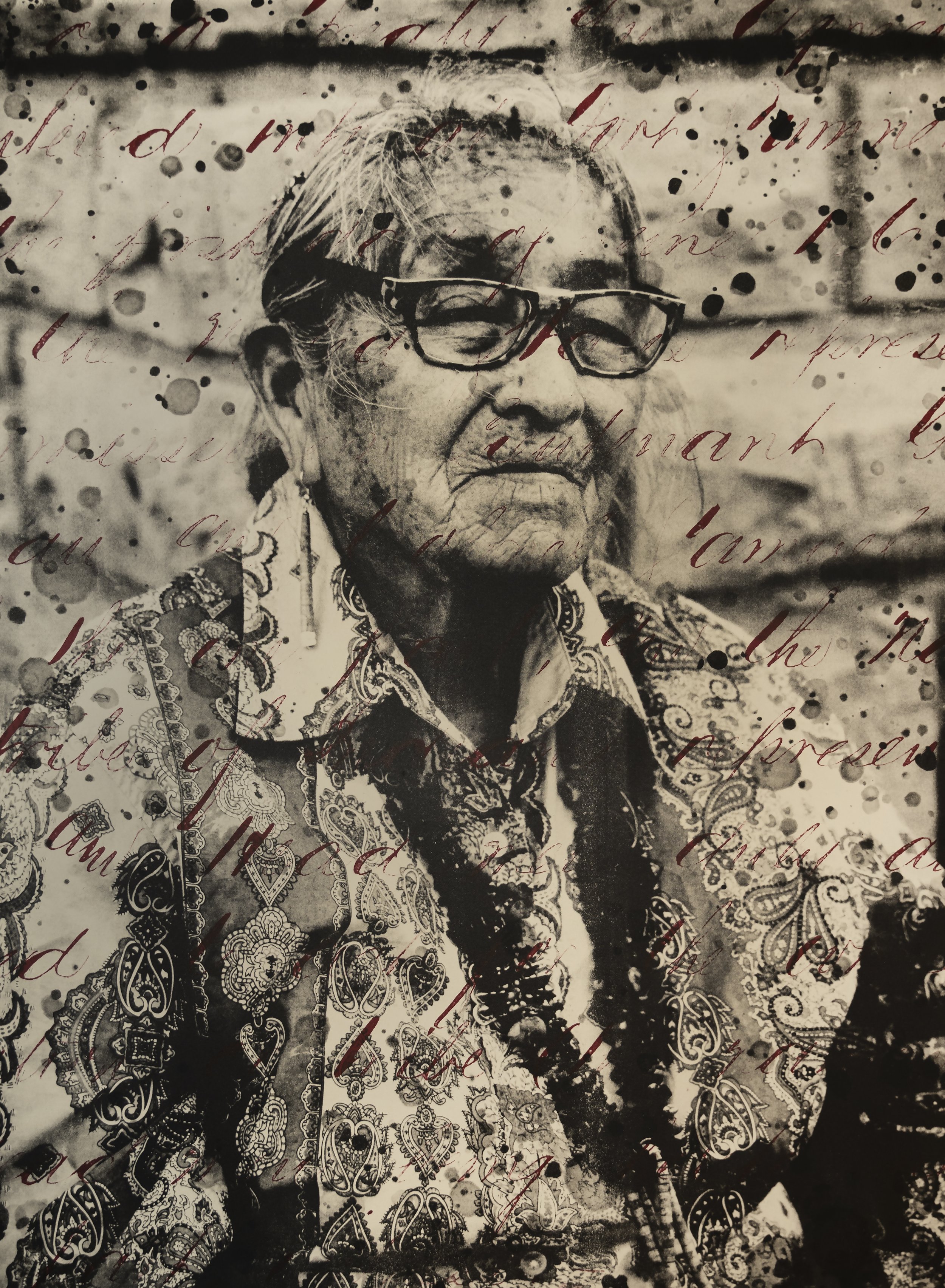Helen Nez is an elder from Blue Gap, Arizona, situated in the center of the Navajo Nation. She was born in 1938 and is related to me by my maternal clan, Redhouse.
The photo lithographs featured show a portrait of Helen with the first page of the Navajo Treaty of 1868. The Diné named the 1868 treaty Naal Tsoos Saní, or the Old Paper, which marked a significant shift in Diné history when it was signed at Fort Sumner, formerly Bosque Redondo. Here, the Diné people lost their freedom and autonomy and came under the US government's rule. Since the treaty, Diné history has been one of continuous efforts to preserve and reclaim their cultural identity and sovereignty.
With each print, Helen fades away, a reminder of how many of our elder’s stories disappear once they are gone and the history within their words. For Helen, the treaty affected her past and the history of the land she comes from. When Helen was just a child, the uranium mining companies used the Diné people to detect the location of uranium. As a result, she grew up half a mile from the mines, drastically changing her perception of the US Government. Yet, Helen continues to persevere, despite losing eight of her eleven children due to the contamination of the mines. Today, she continues to be an advocate against mining, and it is through her strength- a true matriarch preserving her culture and homeland and protecting her family.
